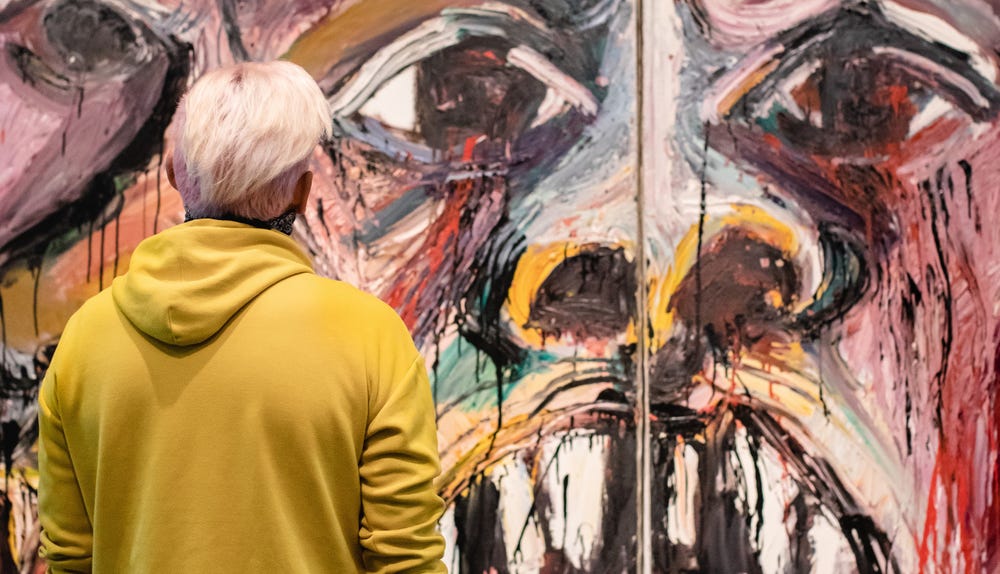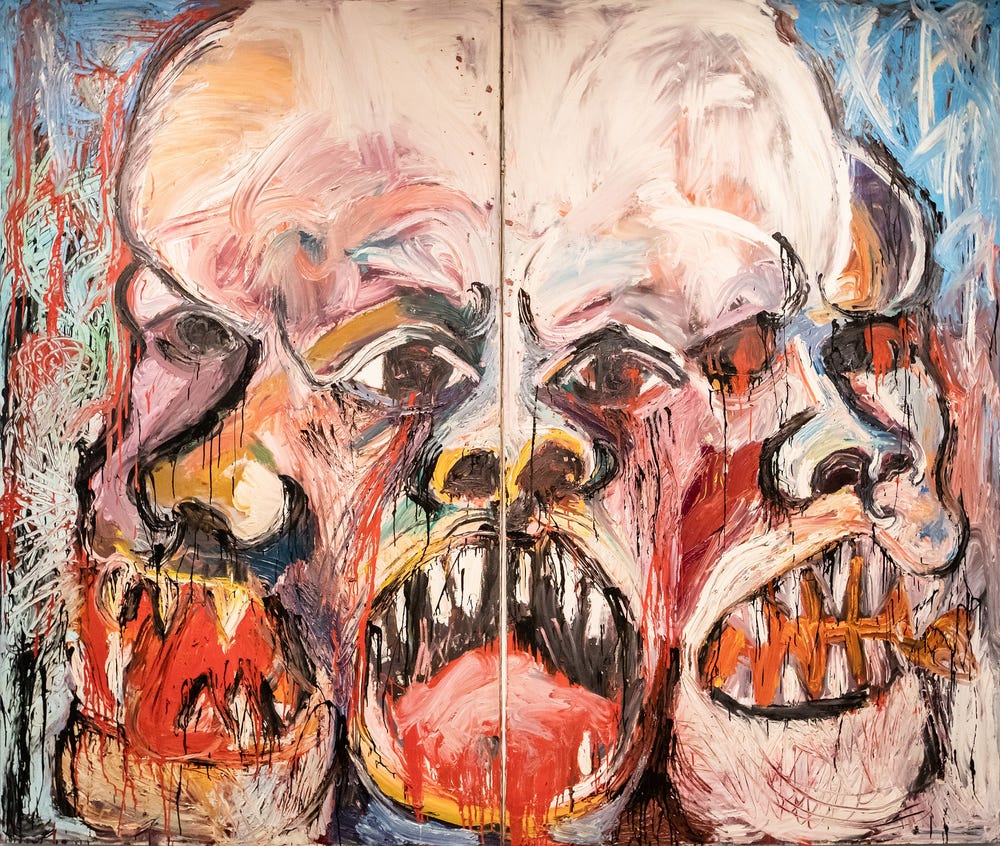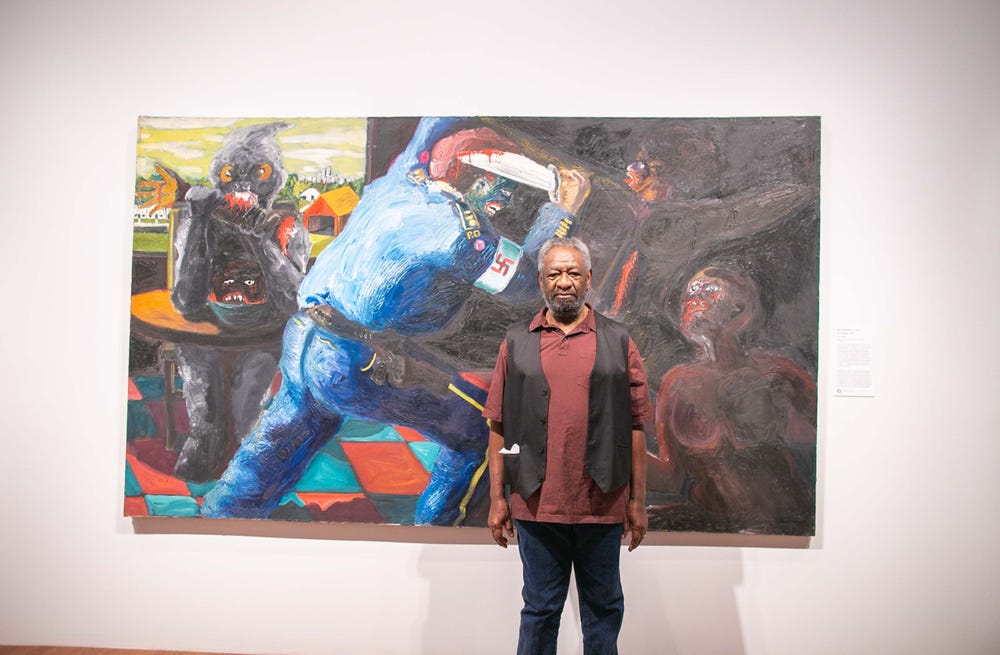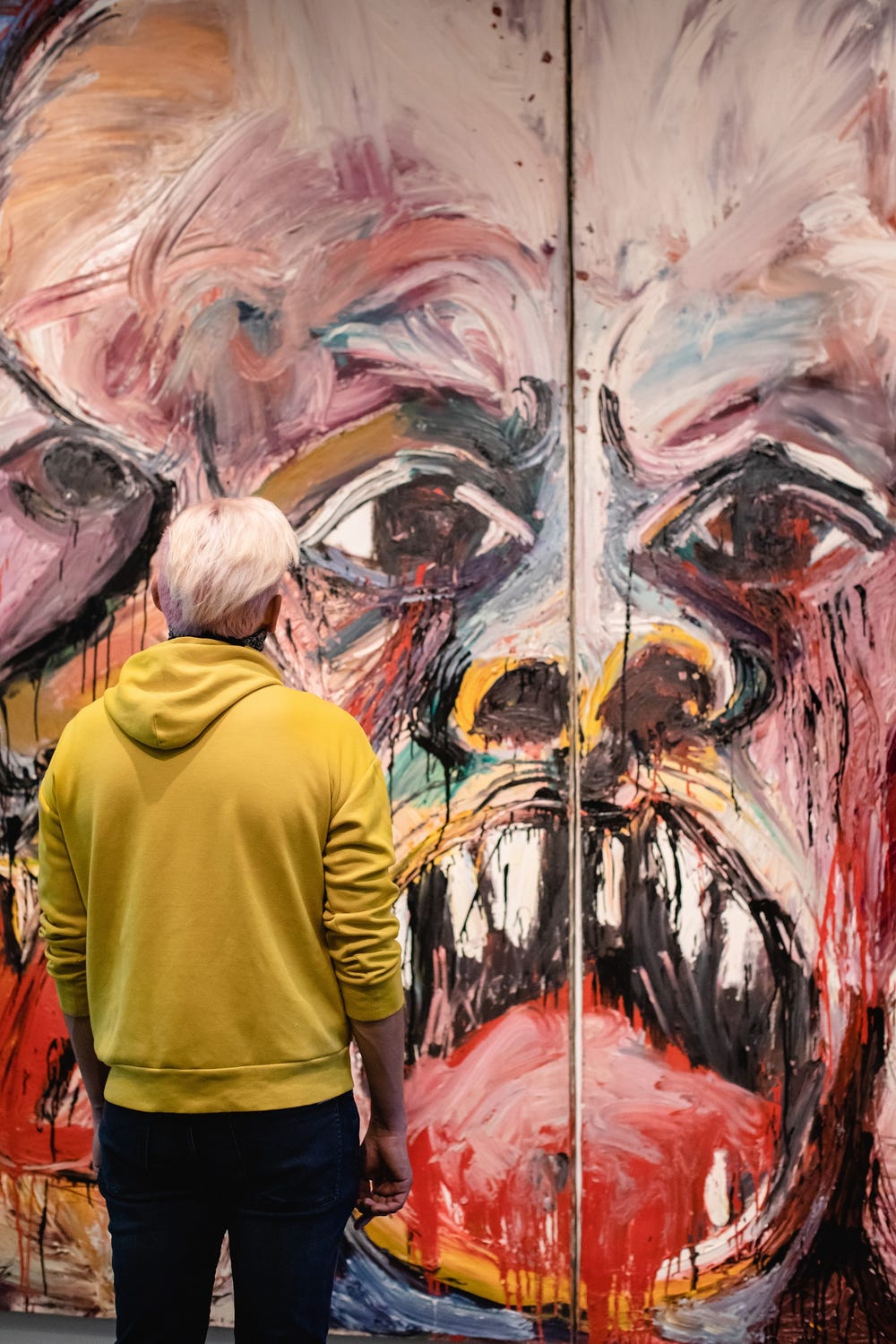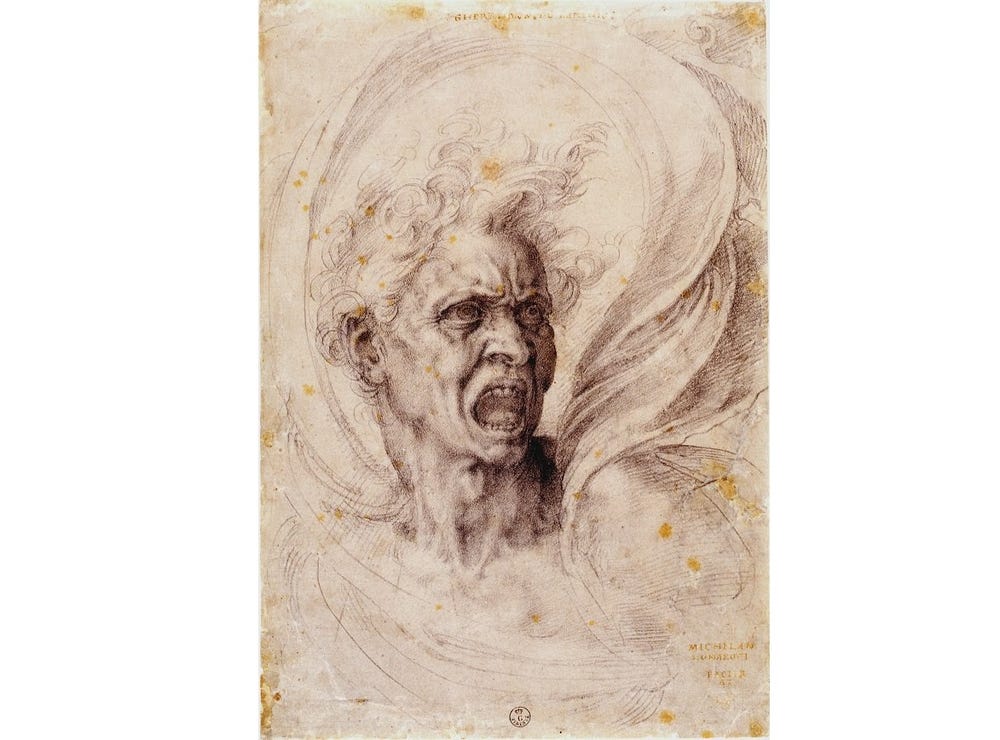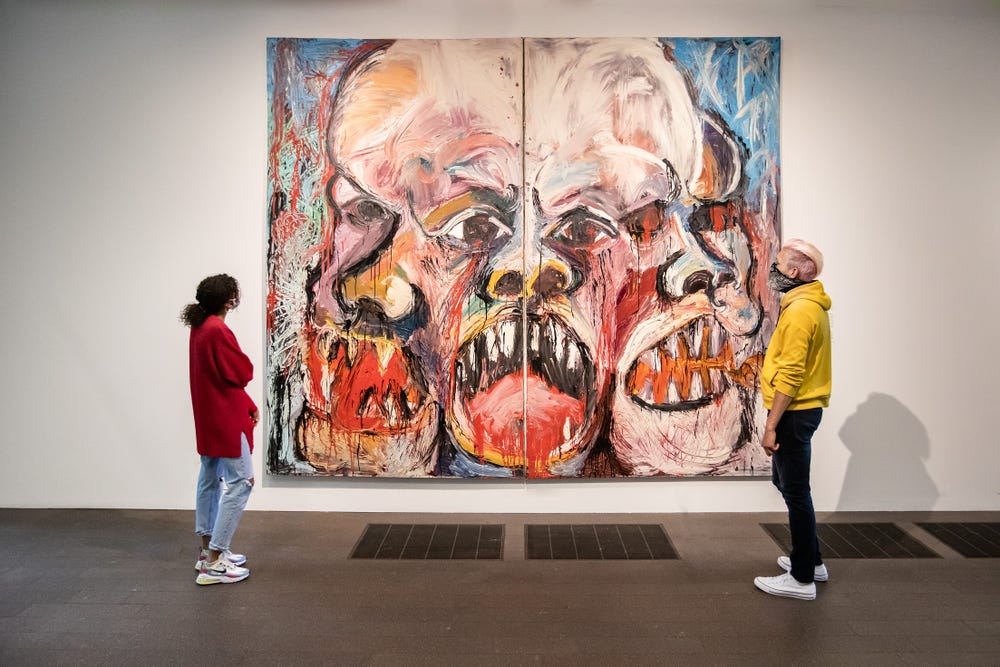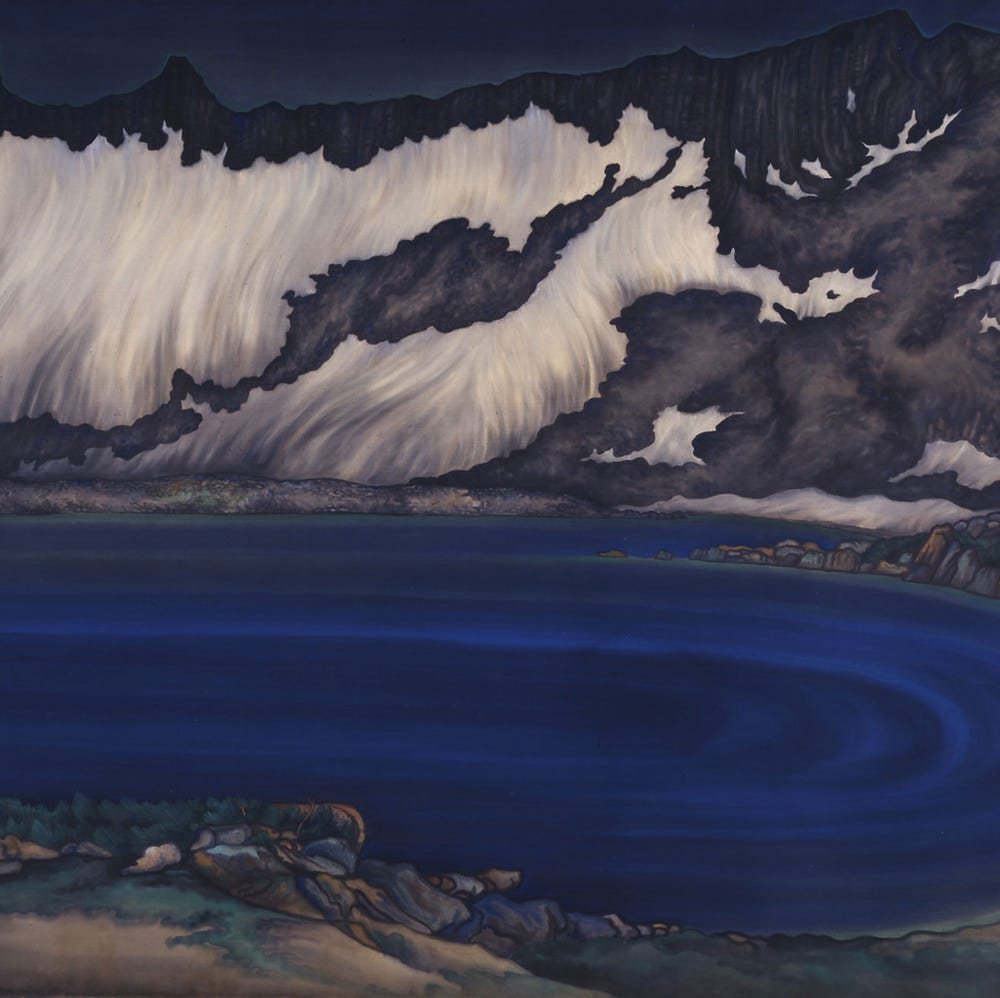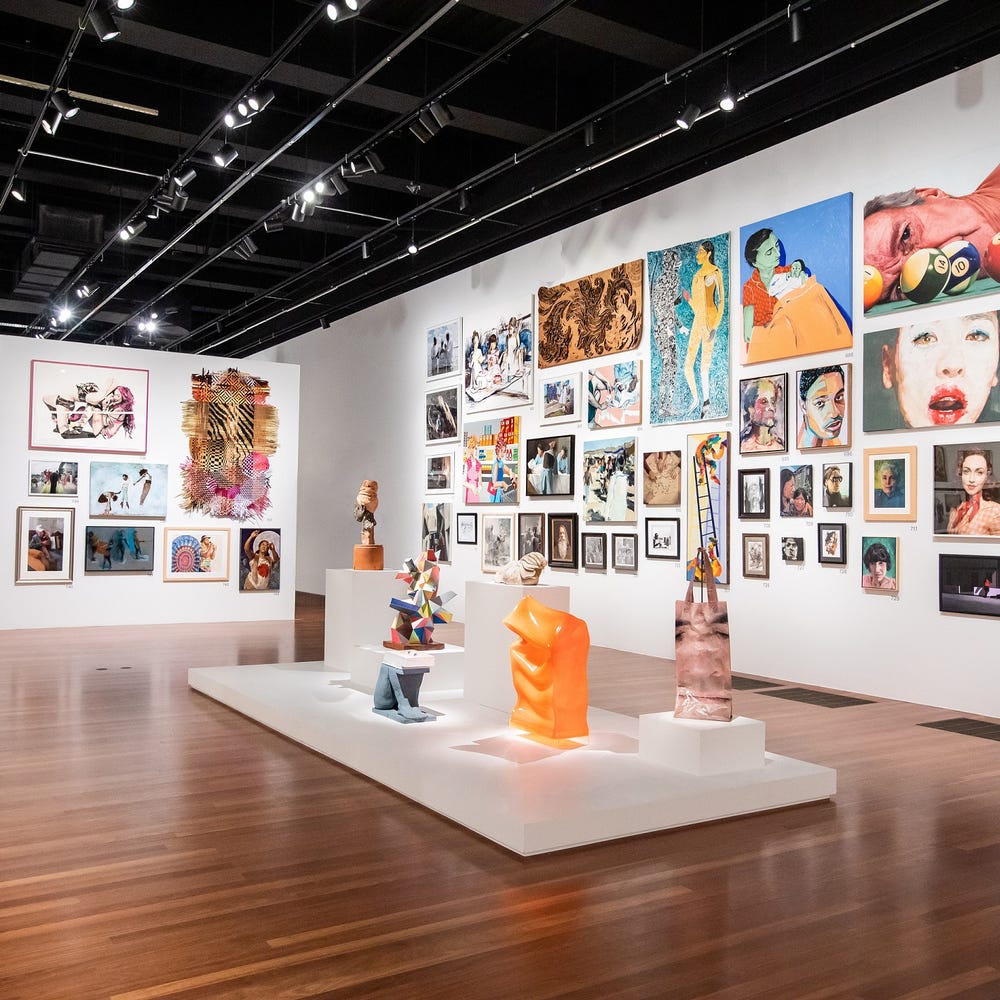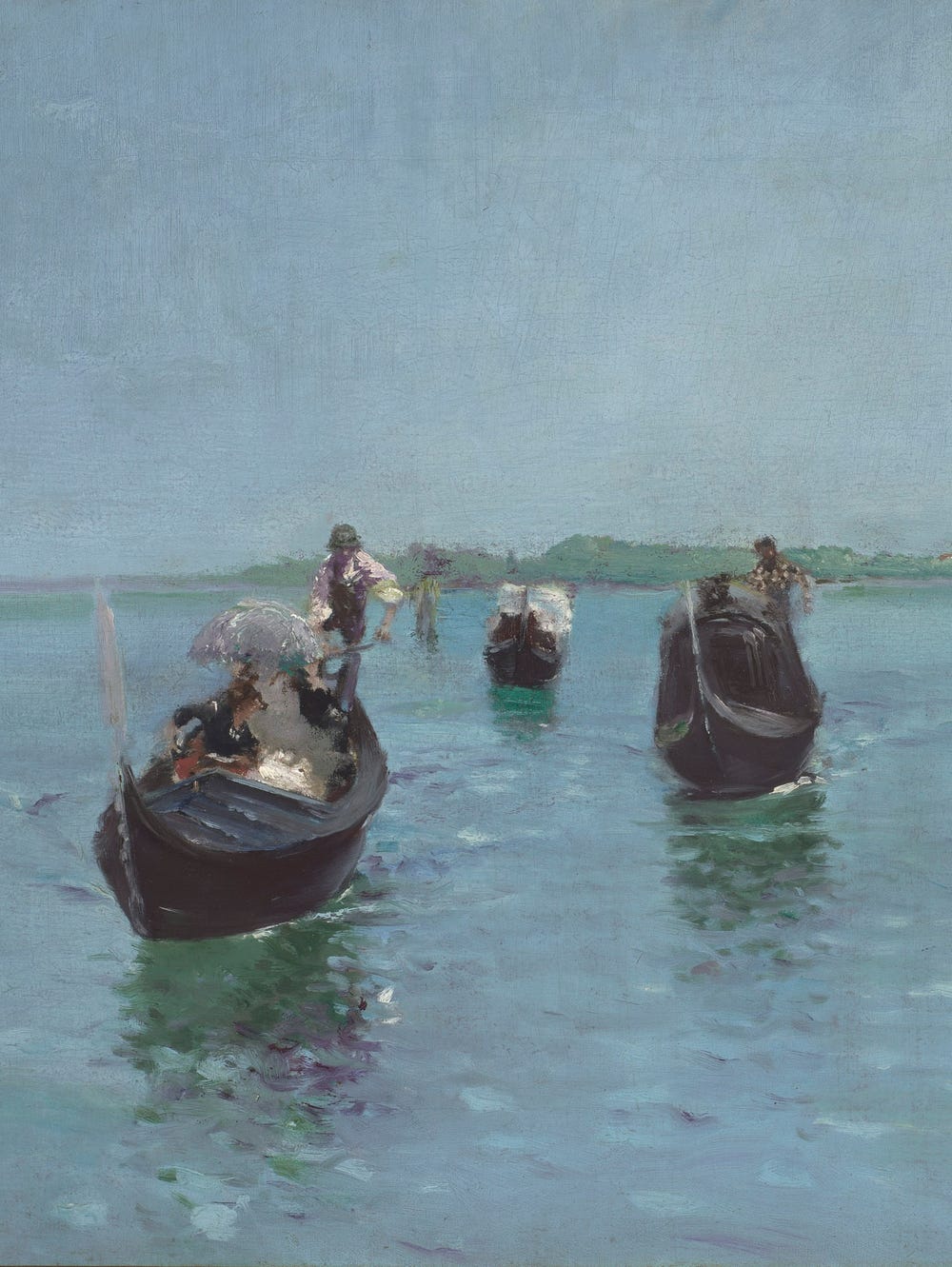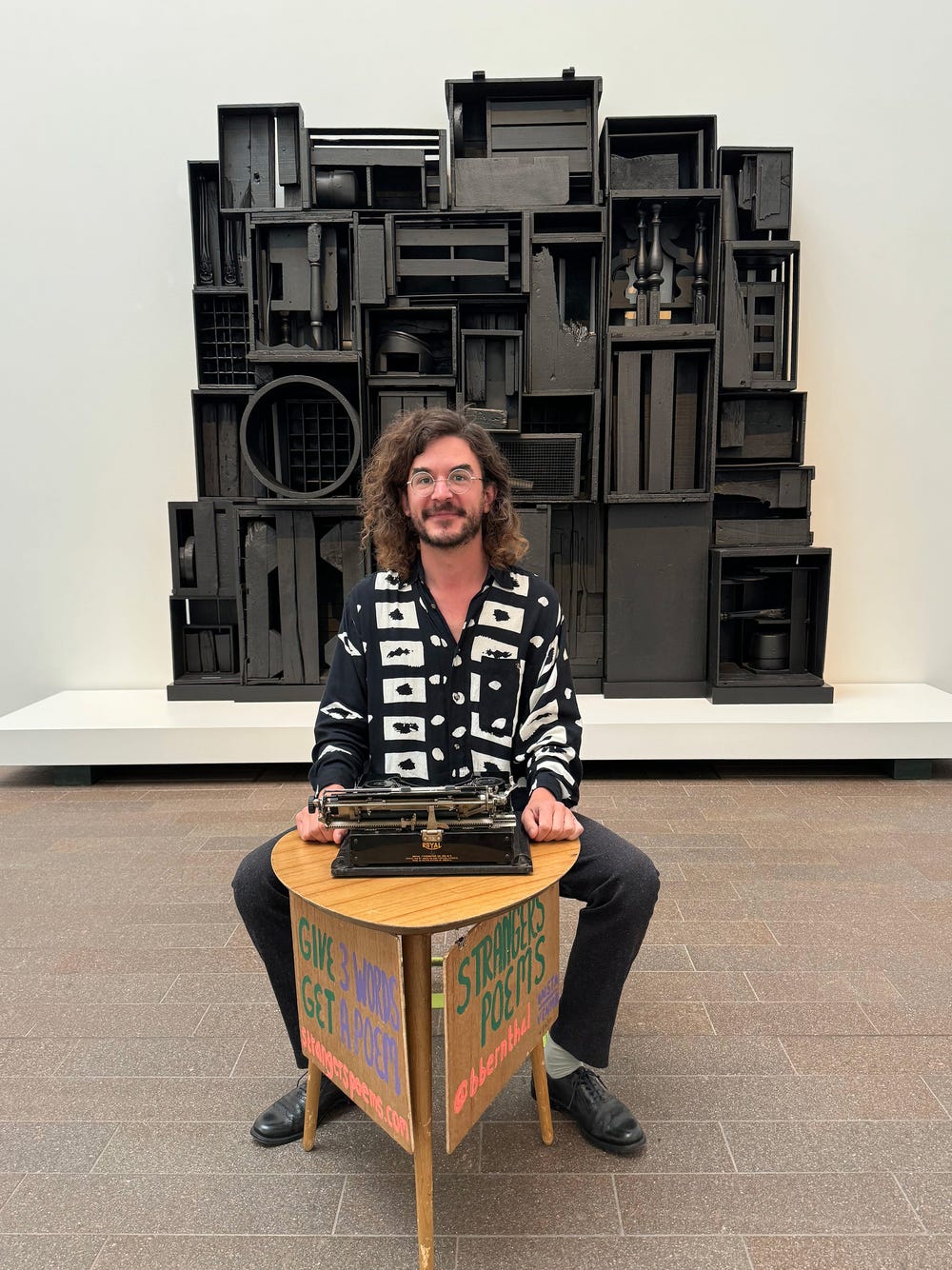Mike Henderson, The Scream, 1966. Oil on canvas, 121 x 142 in. (307.3 x 360.7 cm). Fine Arts Museums of San Francisco, Museum purchase, American Art Trust Fund, and gift of the Peter Lipman Foundation, an anonymous donor, and William Reller, 2020.27a-b.Photo by Gary Sexton. Artwork © Mike Henderson
The Scream (1966), a diptych by Mike Henderson is now part of the permanent collection of the Fine Arts Museums of San Francisco. Visitors may remember Henderson’s work; his painting “Non-Violence” was on view in the exhibition Soul of a Nation: Art in the Age of Black Power. The Scream is the first work of art by Henderson to enter our collection. It was recently installed at the de Young, and is now on view in the reopened museum.
Mike Henderson, The Scream, 1966. Oil on canvas, 121 x 142 in. (307.3 x 360.7 cm). Fine Arts Museums of San Francisco, Museum purchase, American Art Trust Fund, and gift of the Peter Lipman Foundation, an anonymous donor, and William Reller, 2020.27a-b © Mike Henderson
Henderson is an accomplished San Francisco Bay Area visual artist, art professor, filmmaker, and blues musician whose career spans over five decades. He was born in 1944 in the rural farming community of Marshall, Missouri, a town where the Ku Klux Klan marched in every public parade and openly held cross-burning rallies in the town’s parks.
In 1960, he moved to Springfield, Illinois, where he studied art through the Washington School of Art — a correspondence course school. Because segregated Midwestern art schools would not admit Black students, in 1965, he moved West to study at the San Francisco Art Institute (BFA 1969; MFA 1970).
Henderson’s firsthand experience of racial prejudice and politics in San Francisco inspired him to deploy his works of art as vehicles for public protest. His large-scale figurative paintings from this period directly tackled some of the most important and controversial topics regarding race and racism in the United States in general, and in the San Francisco Bay Area in particular.
Henderson in front of his painting Non-Violence featured in Soul of a Nation at the de Young museum. Photography by Joanna Garcia Chéran
Over time, Henderson’s paintings evolved from figurative expressionism into surrealist dreamscapes, and then into the quilt-like geometries of recent decades. Yet despite his stylistic evolution, Henderson has consistently embraced a free-form, stream-of-consciousness approach that draws upon the language and forms of music, including the use of color, rhythm, and, most significantly, improvisation:
— Mike HendersonI was a blank canvas when I was facing the canvases blank. I put my hands in the paint and the rest was what came out of me. A bird doesn’t need to know how to fly. It just does. A fish doesn’t have to take swimming lessons. It swims. A snake doesn’t need legs. It moves perfectly in its own way. I always told my students to stop thinking and paint. Thinking only leads to drinking. There’s a reason they call it painting, rather than thinking. Don’t control the flow — let it happen.
Mike Henderson, The Scream, 1966. Oil on canvas, 121 x 142 in. (307.3 x 360.7 cm). Fine Arts Museums of San Francisco, Museum purchase, American Art Trust Fund, and gift of the Peter Lipman Foundation, an anonymous donor, and William Reller, 2020.27a-b.Photo by Gary Sexton. Artwork © Mike Henderson
Henderson’s The Scream (1966), the most monumental and memorable of his expressionistic figurative paintings of the late 1960s, embodies the artist’s visceral response both to personal experiences and to contemporary events. The police frequently accosted Henderson as he walked home at night from the Art Institute on Russian Hill, through North Beach and Chinatown, and to his apartment in the Mission. Here, he recounts the origin of this extraordinary painting and links it to contemporary events:
— Mike HendersonI had been out in San Francisco for a year when I painted The Scream. I was in my second year at the Art Institute and had just been exposed to the city and its politics. I could see what was going on in the streets with regards to human rights and politics. With The Scream, I wanted to create a big painting to release a scream that was inside of me. From the news of the Vietnam War, to the protests that were going on, and the police brutality — I wanted to express everything that was happening at that moment in the mid-1960s. I was searching for a way to release the confusion and anger that I felt about what was going on in the world and how people were being treated. We all need to make better decisions. And that starts with each person.
Commenting on the massive scale of his 10-foot x 12-foot painting, in which each head is taller than an actual human being, Henderson recalled, “I wanted to paint bigger than I ever had before. My only concern was emptying out the knots I had in my gut about the way I felt.” The immediate art historical source for his image was the screaming figure in Michelangelo’s so-called Damned Soul (ca. 1525) drawing, which Henderson copied from a paperback biography of the Italian master.
Michelangelo Buonarroti, The Damned Soul, c. 1525. Ink on paper, 35.7 x 25.1 cm. Galleria degli Uffizi, Florence
The Scream depicts three disembodied and conjoined skull-like heads screaming with wide-open, blood-red mouths. The central skull appears to be essentially intact, but it shares one eye with a second skull conjoined on the left side, while a third skull on the right side has its own pair of eyes, but has been fused to the first skull. Noting the sharpened teeth, Henderson observed, “I painted the teeth that way to make the work look angrier. Sharp teeth will eat you up, just like hate. I wanted people to take on the issues of the world: Stop the hate, the killing, the stupidity.”
This monstrous three-headed being simultaneously seems to embody a time-lapse representation of a turning head, a congenital aberration, and also a “split personality” emotional state, with the latter effect heightened by the diptych format. In an art historical context, it also recalls the ancient Greek mythological and three-headed dog Cerberus, who guards the gates of hell, or Christian art visualizations of the entrance to Hell as a monster with an open maw.
The three heads, painted with whitish, bone-like colors and reddish, flesh-like colors, appear to be both alive and dead. Commenting on these choices for a painting that addresses both specific racial issues and a global humanity, Henderson observed, “I definitely wanted it to be universal, which is why the heads look like skulls. All skulls are the same color, human or animal.” Describing his lush impasto technique, Henderson recalled, “I did that painting using my hands; no brush was used except for gessoing the canvases. I wanted to put myself in the paint.”
Mike Henderson, The Scream, 1966. Oil on canvas, 121 x 142 in. (307.3 x 360.7 cm). Fine Arts Museums of San Francisco, Museum purchase, American Art Trust Fund, and gift of the Peter Lipman Foundation, an anonymous donor, and William Reller, 2020.27a-b. Photo by Gary Sexton. Artwork © Mike Henderson
Henderson’s The Scream confronts the viewer with a powerful and inescapable vision — and voice — that critiques and condemns the inhumane treatment of some human beings by others. Like Richard O. Moore’s contemporaneous documentary film of James Baldwin talking with Black San Franciscans, “Take This Hammer” (1963), the painting counters the myth of San Francisco as a city without racism. It also takes local and personal experience and transforms it into an international and universal statement on the human condition. As the artist notes, his 54-year-old painting seems more relevant today than ever:
— Mike HendersonRecently, there is an increasing global awareness of police violence and corruption, and a growing desire to address the greedy politicians and racist, sexist governments, workplaces, and institutions that surround us. Now people of all different cultures and age groups are protesting and marching together. Finally, the whole world is screaming out for basic human rights. Looking back at the ‘60s, I constantly ask myself: In 2020, what has changed? Is it a case of new shoes but old socks?
Text by Timothy Anglin Burgard, distinguished senior curator and Ednah Root Curator in Charge of American Art. Learn more about American Art at the de Young.
Further Reading:
Jonathan Curiel, “Mike Henderson Does It All,” SF Weekly, October 30, 2019, sfweekly.com/culture/mike-henderson-does-it-all
